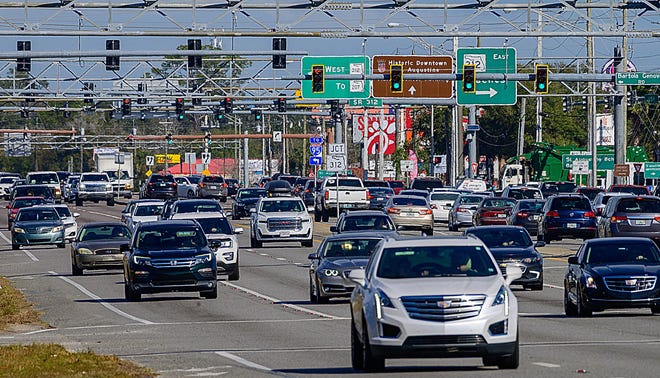St. Augustine Record columnist Steve Cottrell nicely knocks the 15% sales tax increase referendum. Thanks for neatly knocking developer doormats' asinine arguments into a cocked hat.
What we know, don't know about St. Johns County's 1-cent sales tax measure | Steve Cottrell
Steve Cottrell is a former small-town mayor, chamber of commerce president and weekly newspaper editor.
“Tax” may not be a four-letter word, but increased taxation in any form is often the kiss of death for politicians who support it. Just ask George H. W. Bush, who, at the 1988 Republican National Convention, famously said in his acceptance speech, “Congress will push me to raise taxes and I'll say no. And they'll push, and I'll say no, and they'll push again, and I'll say to them, ‘Read my lips: no new taxes.’”
Four years later, of course, he lost to Bill Clinton –– a defeat blamed in part on his broken convention pledge.

Commission OKs measure:St. Johns County sales tax vote approved for Nov. 8 ballot
Steve Cottrell:Should St. Augustine grow as a community or as a 13-square-mile resort?
Growing pains:St. Johns County still among fastest-growing counties
It seemed odd to me, then, when the Republican-led St. Johns County Commission voted to put a one-cent sales surtax measure on the Nov. 8 ballot. Asking voters to support a tax increase seemed counterintuitive for Republicans, but if it included objective analyses for specific projects, it might make sense. Instead, however, the county prepared a smorgasbord menu of possible infrastructure projects to fund, but absent any apparent sense of prioritization.
According to county estimates, the surtax would generate annually $49,626,914 for St. Johns County, $2,986,098 for the City of St. Augustine, and $1,336,779 for the City of St. Augustine Beach. If approved by voters, the additional sales tax would be collected for ten years, beginning January 2023.
To show voters how –– hypothetically, at least –– an estimated $500,000,000 in added revenue over a 10-year period might be spent, a Wish List was prepared, but that’s all that it is. There is no assurance that all or most projects shown as examples of need will be funded by the added revenue, nor quantitative analyses explaining which projects should be addressed in what order. And there’s certainly no guarantee that $50,000,000 will be spent on libraries, or $88,000,000 on parks and recreation, as shown on the county’s laundry list of possibilities.
The county claims its revenue has not kept pace with growth, resulting in a 20-year backlog of needed infrastructure improvements –– hence the proposed one percent surtax. Eventually, the piper must be paid, but who allowed the rampant growth to occur in the first place? Did you? Or did county and city decision-makers allow the growth without first ensuring that new development paid for the impacts it created, and that local government could handle its own fair share going forward?
Although the county can identify current infrastructure needs, what about the future? Remember, the county population was barely 50,000 in 1980 and 84,000 in 1990. Then came the population explosion: 125,000 by 2000 and 190,000 in 2010. Today, the U.S. Census estimates a population of 290,000 with 300,000 knocking at the door. So what will our population be in 2032 when the proposed surtax expires? And how, when and where will that added growth affect annual distribution of the expected surtax revenue?
An advocacy group promoting A Better St. Johns Plan says the county commission is committed to “a Citizens Oversight Committee that will have a seat at the table to determine the projects that will be built and when.” But exactly what does “a seat at the table” mean? A voice or a vote?
Since tourists will be paying an estimated 40 percent of the surtax, it might be a great way to raise half a billion dollars in 10 years to help fund a backlog of infrastructure repairs and help support new infrastructure. But the plan lacks specificity and priority when it comes to proposed projects, and has a lack of clarity when it comes to citizen involvement.
Proponents call it the Penny Plan, but I believe a more accurate title would be St. Johns County Deferred Maintenance Bailout Fund –– $500,000,000 over the next 10 years to help remedy 20 years of deferred maintenance by the same folks now asking for the tax increase.
As MGM mogul Samuel Goldwyn once allegedly said of a proposed movie project, “You can include me out.”
No comments:
Post a Comment